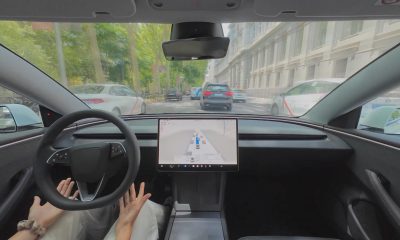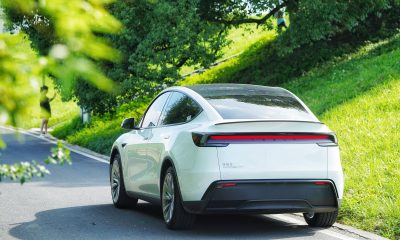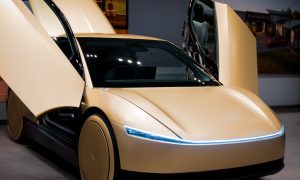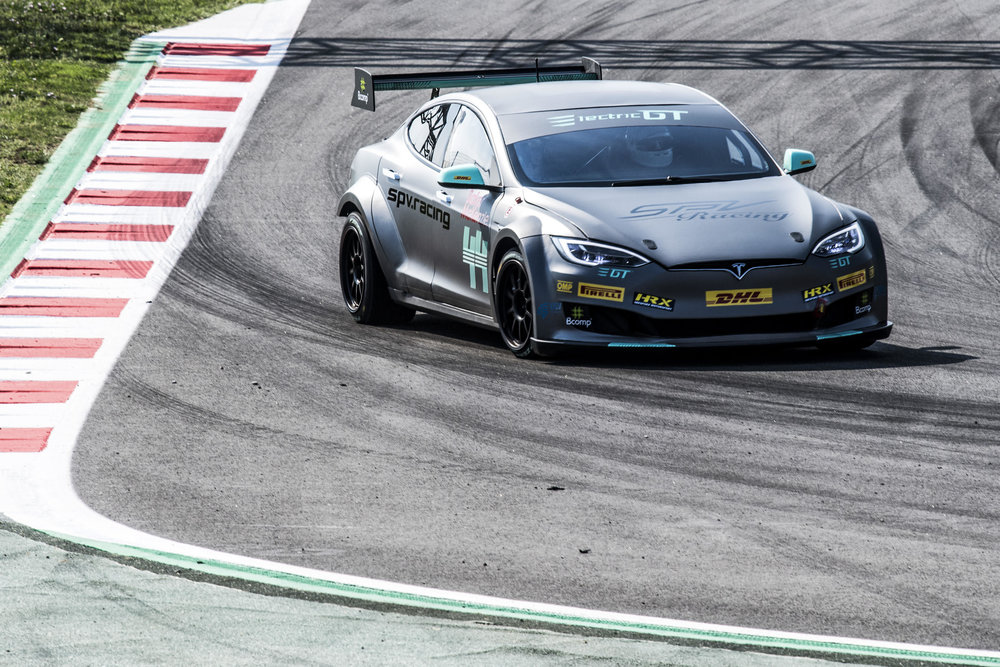

Lifestyle
Electric GT’s Tesla racing series will be a test of driver strategy to avoid overheating
Electric GT, officially known as the Electric Production Car Series, is expected to begin its inaugural season this coming November. Teams of the electric car championship series will be using 10 track-modified Tesla Model S P100D, which are stripped down and fitted with racing components to reduce weight and maximize power. The first track-ready car was showcased recently in a video from auto veteran and former Top Gear and Fifth Gear presenter Tiff Needell, who was able to get behind the wheel of Electric GT’s P100D race car in a test drive around the nearly 2.9-mile Circuit de Barcelona-Catalunya in Barcelona.
While Tiff was impressed by the power and handling of Electric GT’s Model S P100D race car, the vehicle’s limitations immediately became apparent after being driven hard for a lap and a half. After this, the electric car experienced overheating issues, forcing the electric car to stop on the pits to be cooled down. Considering that Electric GT plans to hold 37-mile races for its inaugural season, it would be quite tricky to have vehicles that would only be good for a couple of laps before they overheat.
A spokesperson for Electric GT recently addressed what happened to the P100D race car during Tiff’s test drive. According to the spokesperson, the vehicle had been out in the heat all day before it was driven by the former Top Gear and Fifth Gear host. Engineers from the racing series also noted that some of the car’s sensors did not work properly, allowing the Model S P100D race car’s battery to get hotter than it should have.
“The team spotted an accidental disconnection of one of the outdoor temperature sensors from the air conditioning system, which caused the air conditioning system to not send cold air to the battery and other systems when needed. There is always a limit if the power is used indiscriminately, but the resistance threshold is much higher if the air conditioning system had worked correctly. The team has now fixed that,” the spokesperson said.
Considering the limitations on the Model S P100D race car, the Electric GT spokesperson noted that the vehicle would be able to run the race distances — but with some strings attached. Instead of taking advantage of the race car’s 778 hp all the time, the vehicles would be running at a more manageable 470 hp. The spokesperson further noted that drivers would have full control to decide when to use their P100D race car’s full power, such as when overtaking or dashing to the finish line. This, at least for the inaugural season, would be “part of the strategy and part of the show.”
While using the vehicle’s weakness as a point for strategy is a clever move by Electric GT, the overheating issues of the Model S P100D when driven hard on the track are undeniable. The Model S P100D, after all, is a monster on the drag strip, but it still has teething problems on the track. Fortunately for Tesla’s vehicles, these teething problems do not appear to be present in the Model 3. Over the past months, Model 3s have been taken to the track and driven hard, and not one issue of overheating has emerged from the Tesla community so far. The Model 3 even won the 2018 Canadian Sport Compact Series Time Attack series on its category, and that car was not even the performance version. Nevertheless, the Model 3 Performance, a car that Elon Musk stated is 15% faster on the track than a BMW M3, is set to begin deliveries soon. Once the vehicle saturates the racing market, Electric GT would be wise to adopt the Model 3 Performance as an option for its next racing seasons.
With the Model 3, Tesla is ushering in a new era for its electric cars. The Model 3 might be Tesla’s entry-level vehicle by definition, but its battery tech and electric motors were designed and created at a time when Tesla already had experience in the electric car industry. The Model 3’s 2170 battery cells, for one, are a significant step up from the 18650 cells present in the Model S and Model X. These battery cells are bound to make their way to Tesla’s two flagship vehicles though, most likely in an upcoming and much-speculated Model S and X refresh. If or when this happens, the idea of a Model S track car that can handle events far beyond a 37-mile race would be extremely plausible.
Elon Musk
X account with 184 followers inadvertently saves US space program amid Musk-Trump row
Needless to say, the X user has far more than 184 followers today after his level-headed feat.

An X user with 184 followers has become the unlikely hero of the United States’ space program by effectively de-escalating a row between SpaceX CEO Elon Musk and President Donald Trump on social media.
Needless to say, the X user has far more than 184 followers today after his level-headed feat.
A Near Fall
During Elon Musk and Donald Trump’s fallout last week, the U.S. President stated in a post on Truth Social that a good way for the United States government to save money would be to terminate subsidies and contracts from the CEO’s companies. Musk responded to Trump’s post by stating that SpaceX will start decommissioning its Dragon spacecraft immediately.
Musk’s comment was received with shock among the space community, partly because the U.S. space program is currently reliant on SpaceX to send supplies and astronauts to the International Space Station (ISS). Without Dragon, the United States will likely have to utilize Russia’s Soyuz for the same services—at a significantly higher price.
X User to the Rescue
It was evident among X users that Musk’s comments about Dragon being decommissioned were posted while emotions were high. It was then no surprise that an X account with 184 followers, @Fab25june, commented on Musk’s post, urging the CEO to rethink his decision. “This is a shame this back and forth. You are both better than this. Cool off and take a step back for a couple days,” the X user wrote in a reply.
Much to the social media platform’s surprise, Musk responded to the user. Even more surprising, the CEO stated that SpaceX would not be decommissioning Dragon after all. “Good advice. Ok, we won’t decommission Dragon,” Musk wrote in a post on X.
Not Planned, But Welcomed
The X user’s comment and Musk’s response were received extremely well by social media users, many of whom noted that @Fab25june’s X comment effectively saved the U.S. space program. In a follow-up comment, the X user, who has over 9,100 followers as of writing, stated that he did not really plan on being a mediator between Musk and Trump.
“Elon Musk replied to me. Somehow, I became the accidental peace broker between two billionaires. I didn’t plan this. I was just being me. Two great minds can do wonders. Sometimes, all it takes is a breather. Grateful for every like, DM, and new follow. Life’s weird. The internet’s weirder. Let’s ride. (Manifesting peace… and maybe a Model Y.)” the X user wrote.
Lifestyle
Tesla Cybertruck takes a bump from epic failing Dodge Charger
The Cybertruck seemed unharmed by the charging Charger.
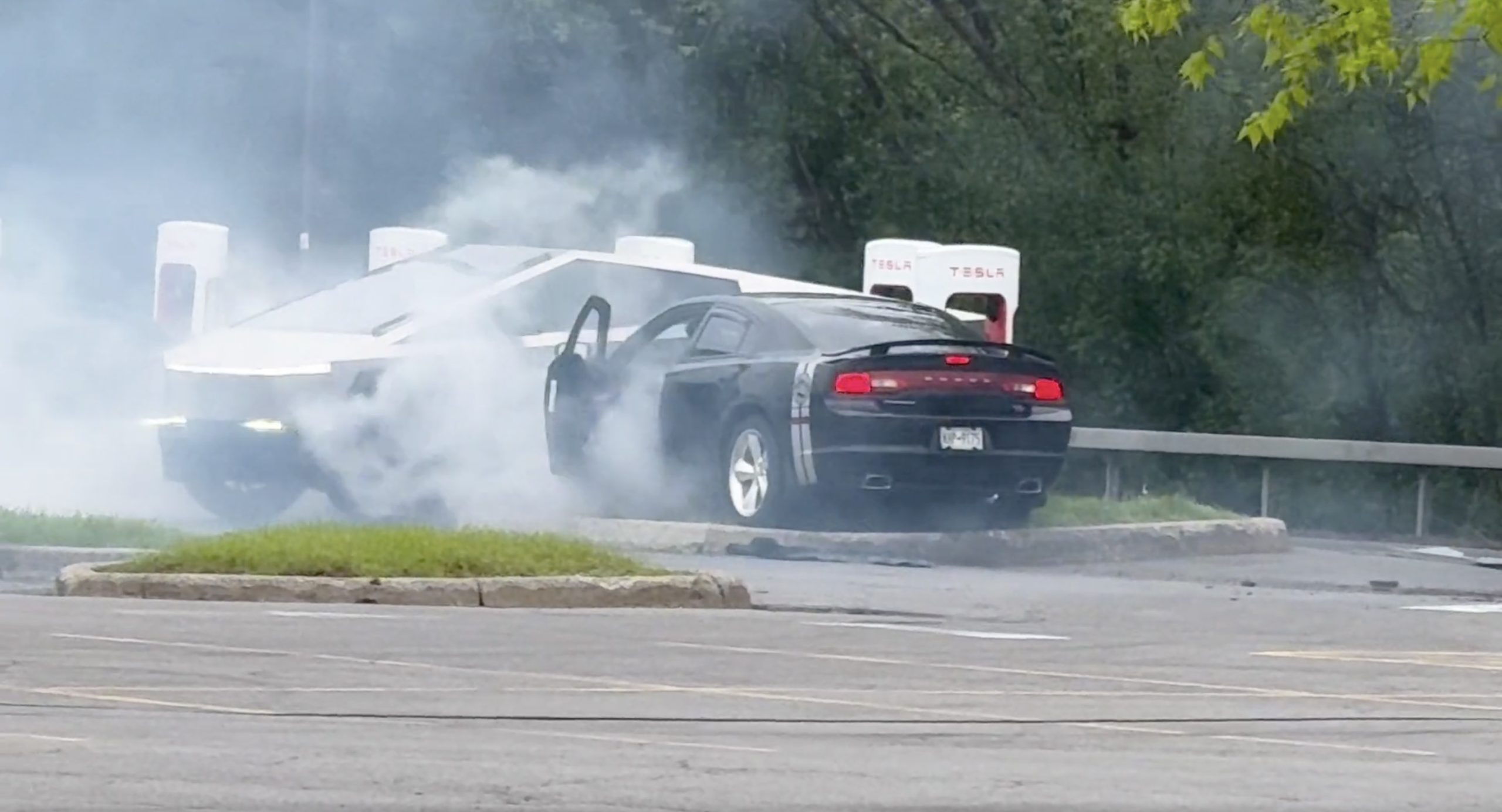
There comes a time in a driver’s life when one is faced with one’s limitations. For the driver of a Dodge Charger, this time came when he lost control and crashed into a Tesla Cybertruck–an absolute epic fail.
A video of the rather unfortunate incident was shared on the r/TeslaLounge subreddit.
Charging Charger Fails
As could be seen in the video, which was posted on the subreddit by Model Y owner u/Hammer_of_something, a group of teens in a Dodge Charger decided to do some burnouts at a Tesla Supercharger. Unfortunately, the driver of the Charger failed in his burnout or donut attempt, resulting in the mopar sedan going over a curb and bumping a charging Cybertruck.
Ironically, the Dodge Charger seemed to have been parked at a Supercharger stall before its driver decided to perform the failed stunt. This suggests that the vehicle was likely ICE-ing a charging stall before it had its epic fail moment. Amusingly enough, the subreddit member noted that the Cybertruck did not seem like it took any damage at all despite its bump. The Charger, however, seemed like it ran into some trouble after crashing into the truck.
Alleged Aftermath
As per the the r/TeslaLounge subreddit member, the Cybertruck owner came rushing out to his vehicle after the Dodge Charger crashed into it. The Model Y owner then sent over the full video of the incident, which clearly showed the Charger attempting a burnout, failing, and bumping into the Cybertruck. The Cybertruck owner likely appreciated the video, in part because it showed the driver of the Dodge Charger absolutely freaking out after the incident.
The Cybertruck is not an impregnable vehicle, but it can take bumps pretty well thanks to its thick stainless steel body. Based on this video, it appears that the Cybertruck can even take bumps from a charging Charger, all while chilling and charging at a Supercharger. As for the teens in the Dodge, they likely had to provide a long explanation to authorities after the incident, since the cops were called to the location.
Lifestyle
Anti-Elon Musk group crushes Tesla Model 3 with Sherman tank–with unexpected results
Ironically enough, the group’s video ended up highlighting something very positive for Tesla.

Anti-Elon Musk protesters and critics tend to show their disdain for the CEO in various ways, but a recent video from political action group Led By Donkeys definitely takes the cake when it comes to creativity.
Ironially enough, the group’s video also ended up highlighting something very positive for Tesla.
Tank vs. Tesla
In its video, Led By Donkeys featured Ken Turner, a 98-year-old veteran who served in the British army during World War II. The veteran stated that Elon Musk, the richest man in the world, is “using his immense power to support the far-right in Europe, and his money comes from Tesla cars.”
He also noted that he had a message for the Tesla CEO: “We’ve crushed fascism before and we’ll crush it again.” To emphasize his point, the veteran proceeded to drive a Sherman tank over a blue Tesla Model 3 sedan, which, of course, had a plate that read “Fascism.”
The heavy tank crushed the Model 3’s glass roof and windows, much to the delight of Led By Donkeys’ commenters on its official YouTube channel. But at the end of it all, the aftermath of the anti-Elon Musk demonstration ended up showcasing something positive for the electric vehicle maker.
Tesla Model 3 Tanks the Tank?
As could be seen from the wreckage of the Tesla Model 3 after its Sherman encounter, only the glass roof and windows of the all-electric sedan were crushed. Looking at the wreckage of the Model 3, it seemed like its doors could still be opened, and everything on its lower section looked intact.
Considering that a standard M4 Sherman weighs about 66,800 to 84,000 pounds, the Model 3 actually weathered the tank’s assault really well. Granted, the vehicle’s suspension height before the political action group’s demonstration suggests that the Model 3’s high voltage battery had been removed beforehand. But even if it hadn’t been taken off, it seemed like the vehicle’s battery would have survived the heavy ordeal without much incident.
This was highlighted in comments from users on social media platform X, many of whom noted that a person in the Model 3 could very well have survived the ordeal with the Sherman. And that, ultimately, just speaks to the safety of Tesla’s vehicles. There is a reason why Teslas consistently rank among the safest cars on the road, after all.
-

 Elon Musk3 days ago
Elon Musk3 days agoTesla investors will be shocked by Jim Cramer’s latest assessment
-

 News1 week ago
News1 week agoTesla Robotaxi’s biggest challenge seems to be this one thing
-

 News2 weeks ago
News2 weeks agoTexas lawmakers urge Tesla to delay Austin robotaxi launch to September
-

 Elon Musk2 weeks ago
Elon Musk2 weeks agoFirst Look at Tesla’s Robotaxi App: features, design, and more
-

 Elon Musk2 weeks ago
Elon Musk2 weeks agoxAI’s Grok 3 partners with Oracle Cloud for corporate AI innovation
-

 News2 weeks ago
News2 weeks agoSpaceX and Elon Musk share insights on Starship Ship 36’s RUD
-

 News2 weeks ago
News2 weeks agoWatch Tesla’s first driverless public Robotaxi rides in Texas
-

 News2 weeks ago
News2 weeks agoTesla has started rolling out initial round of Robotaxi invites




